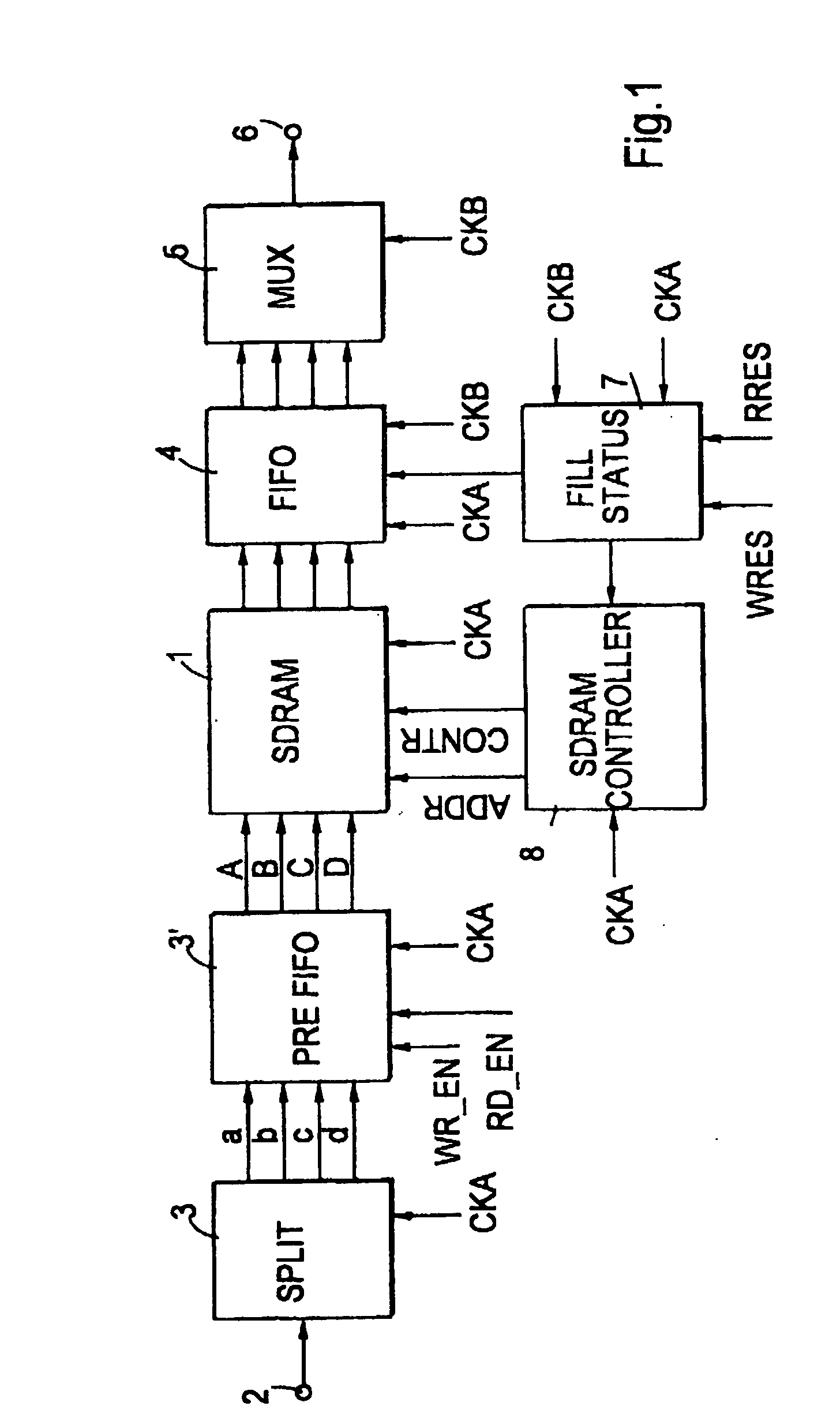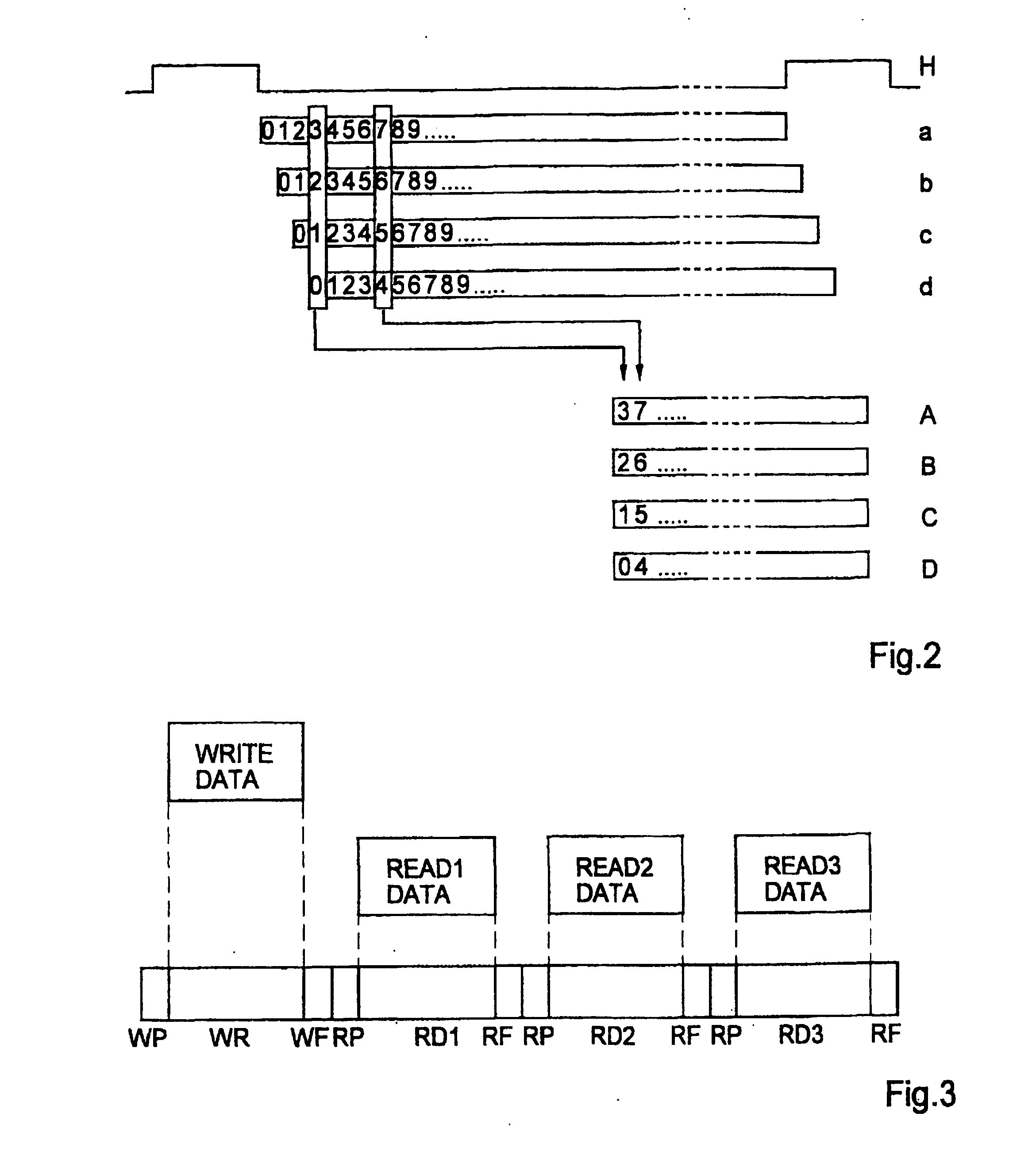Method for storing video signals
a video signal and video technology, applied in the field of video signal storage, can solve problems such as restricting their us
- Summary
- Abstract
- Description
- Claims
- Application Information
AI Technical Summary
Benefits of technology
Problems solved by technology
Method used
Image
Examples
Embodiment Construction
[0016] Digital video signals are fed to the arrangement according to FIG. 1 via an input 2, which signals are divided into four parallel data streams a, b, c, d in a circuit 3, which data streams are delayed relative to one another in each case by the duration of a pixel. In a buffer memory 3′—designated as PREFIFO in FIG. 1—every fourth pixel is taken from the data streams a, b, c, d, thereby producing compressed data streams A, B, C, D. To that end, the circuit 3 and the buffer memory 3′ are clocked with a clock CKA (also called Masterclock). The buffer memory 3′ receives suitable control signals WR_EN and RD_EN, which bring about the writing of every fourth pixel and the reading of each stored pixel.
[0017] This operation is illustrated diagrammatically in FIG. 2, the duration of a television line being indicated in line H using blanking pulses. Owing to the large ratio of the line period to the duration of a pixel, all of the signals and data streams are shown interrupted in FIG...
PUM
 Login to View More
Login to View More Abstract
Description
Claims
Application Information
 Login to View More
Login to View More - R&D
- Intellectual Property
- Life Sciences
- Materials
- Tech Scout
- Unparalleled Data Quality
- Higher Quality Content
- 60% Fewer Hallucinations
Browse by: Latest US Patents, China's latest patents, Technical Efficacy Thesaurus, Application Domain, Technology Topic, Popular Technical Reports.
© 2025 PatSnap. All rights reserved.Legal|Privacy policy|Modern Slavery Act Transparency Statement|Sitemap|About US| Contact US: help@patsnap.com


